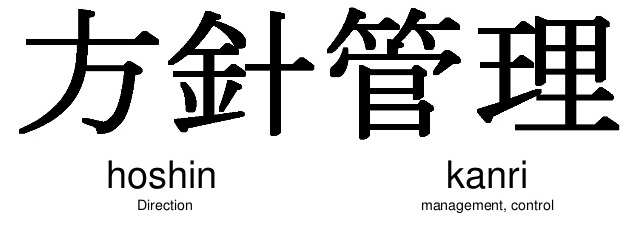This Japanese methodology brings together strategy, tactics and operations together on a common goal.
‘Hoshin Kanri’ implies ‘direction management’. In the late 1950s, Japanese Professor, Yoji Akao, had conceived this methodology, which ensures that every employee is pulling in the same direction, at the same time, to achieve the strategic goals of a company. In the process, it eliminates the waste that comes from inconsistent direction and poor communication.
It aligns three key aspects —the company’s goals with the plans of the middle management and the work performed by all the employees. Thus, it brings strategy, tactics and operations, together on a common goal.
Bridgestone Tire Corporation was the first company to use this methodology, way back in 1965.
In 1976, Hewlett-Packard (HP) had entered into a JV with Yokagawa, but unfortunately it turned out to be the least profitable division within the HP Group, until Yokagawa introduced the Hoshin Kanri methodology. By 1982, this division became the most profitable division in the Group.
By 1985, this methodology was introduced to the rest of Hewlett-Packard.
Once it travelled abroad, the methodology gained popularity with other global companies, such as Proctor & Gamble, Ford, Xerox and Florida Power & Light.
3M, the company which leads in innovation and solutions, is also a great follower of the Hoshin Kanri way of performance management. This methodology makes its planning process clearly defined and cascading. The company uses an extensive process of planning through cascading of global goals and also country priorities.
Back home even Amul practices Hoshin Kanri methodology.
So what exactly is the Hoshin Kanri methodology?
Imagine that an airlines company without a sophisticated navigation device wants every pilot to reach a particular destination.
It would be impossible to manage the aircrafts and pilots. The individual pilots would know about their destination but it would be almost impractical to give direction to each pilot. Besides, each one would depart from a different place, may have different weather conditions, and may have to take detours along the way.
This is where a sophisticated navigation system comes into play, which will ensure that, even though each pilot is acting independently, each will arrive at the same endpoint.
The challenge faced by these pilots is similar to what workers face in many organisations. There’s a strategic destination set by the company but they do not have a convenient device which will help them to meet their objective.
It does happen that individuals, teams, and even departments get so far off from each other that they forget the final destination.
It is here that Hoshin Kanri not only gives a direction, but also ensures that everyone is on the same line moving towards the ultimate goal. The core objective of this methodology is to create a systematic process that aligns goals at all levels of the organisation with its strategic vision.
Five steps of Hoshin Kanri
i) A long-term strategic plan has to be developed by the top management, which will also address a small number of critical issues and short- term goals.
ii) Every goal should be aligned to an owner, a facilitator and a coach who has the skills and authority to successfully see the goal through to its conclusion.
iii) The mid-level managers will have to develop a tactical approach to achieve these goals. Flexibility and adaptability are two key pre-requisites of this process. Therefore, back and forth communication between stakeholders is very important, in order to identify any change in plan, if required.
iv) The next level of workers will need to lay out the operational details and implement the tactics.
v) Progress should be tracked continuously and reviewed formally on a regular basis. These progress checkpoints provide an opportunity for adjustment of tactics and their associated operational details.
Value our content... contribute towards our growth. Even a small contribution a month would be of great help for us.
Since eight years, we have been serving the industry through daily news and stories. Our content is free for all and we plan to keep it that way.
Support HRKatha. Pay Here (All it takes is a minute)





































For the 1st time, I read this methodology. thanks for up-keeping knowledge. Whether will it truly work out in Govt/ Public Sector Organisations?
I think it is good information.
It certainly works Kadali!!!
I think while the subject line on the topic was very loaded…but the approach or the deployment methodology can still be made more practical for someone to deploy this…All it talks about is gyan…
I think Indian Public Sector Enterprises are already working on this method following the five steps as indicated above, except that in a pse there is a lesser degree of freedom for innovation / individuality…
1. A goal is decided by the board of directors
2. There are 3-4 directors , you can call then owners, responsible for carrying out the different goal attaining activities based on their qualifications/skills.
3. GMs/Dy.GMs work out how to carry out these activities to maximise profit.
4. Lower level employees actually to carry out these activities under the guidelines provided.
5. Periodic meetings are held at different levels to review the progress.
Common sense approach
This is a very good methodology which gives a clear information to the employees about the company goals and plans.